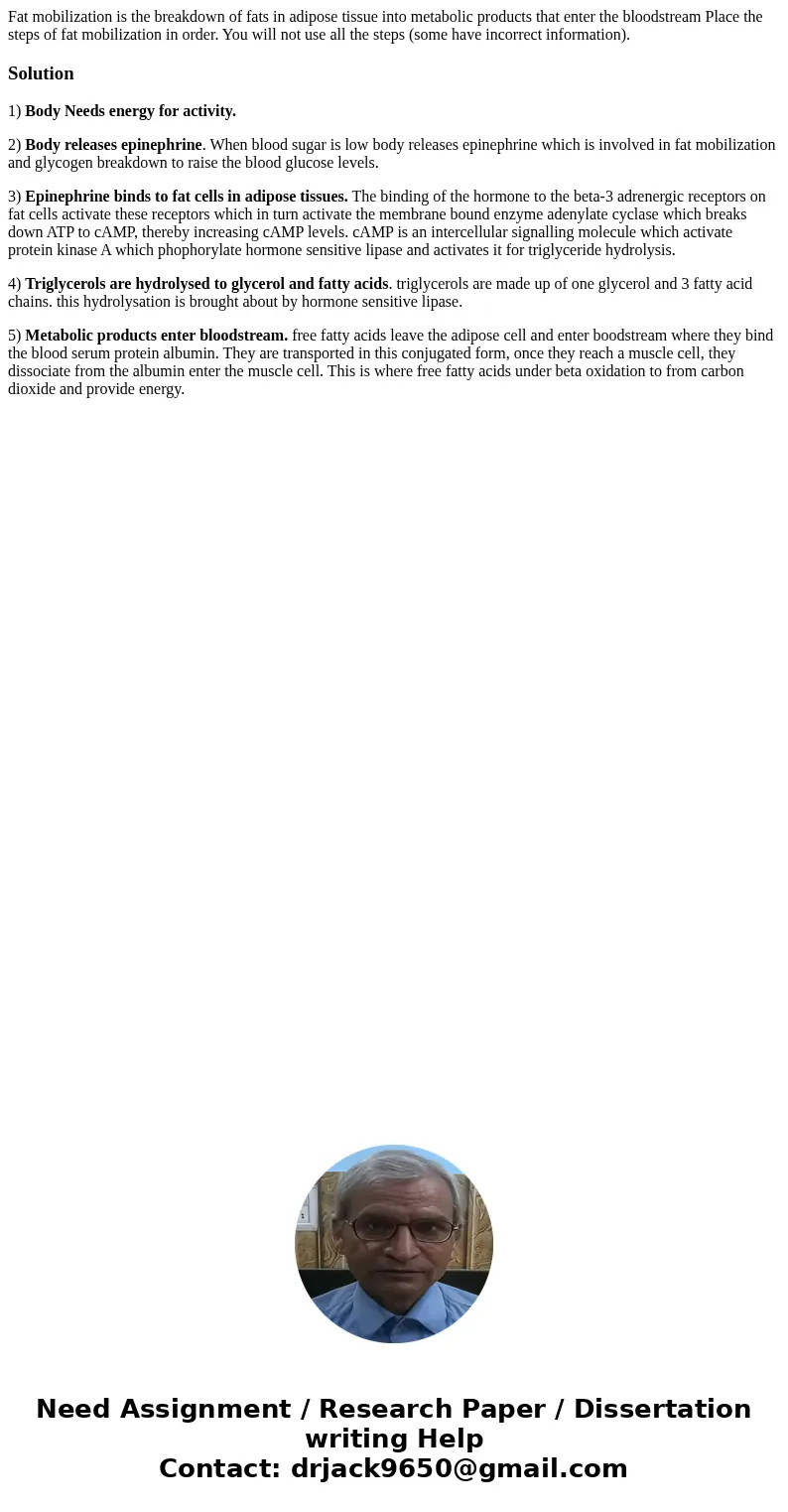Fat mobilization is the breakdown of fats in adipose tissue
Solution
1) Body Needs energy for activity.
2) Body releases epinephrine. When blood sugar is low body releases epinephrine which is involved in fat mobilization and glycogen breakdown to raise the blood glucose levels.
3) Epinephrine binds to fat cells in adipose tissues. The binding of the hormone to the beta-3 adrenergic receptors on fat cells activate these receptors which in turn activate the membrane bound enzyme adenylate cyclase which breaks down ATP to cAMP, thereby increasing cAMP levels. cAMP is an intercellular signalling molecule which activate protein kinase A which phophorylate hormone sensitive lipase and activates it for triglyceride hydrolysis.
4) Triglycerols are hydrolysed to glycerol and fatty acids. triglycerols are made up of one glycerol and 3 fatty acid chains. this hydrolysation is brought about by hormone sensitive lipase.
5) Metabolic products enter bloodstream. free fatty acids leave the adipose cell and enter boodstream where they bind the blood serum protein albumin. They are transported in this conjugated form, once they reach a muscle cell, they dissociate from the albumin enter the muscle cell. This is where free fatty acids under beta oxidation to from carbon dioxide and provide energy.

 Homework Sourse
Homework Sourse